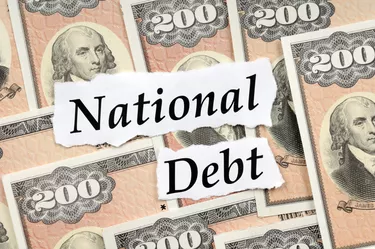
Funding at par is a term that is used to describe a practice that involves taking in old bonds and issuing new ones at the face value of the old bonds. This is a process that was used by the United States government successfully under the recommendation of Alexander Hamilton.
Bond Par Value
Video of the Day
To understand funding at par, you must first understand par value and bonds in general. A bond is a debt instrument that is issued by a government or organization. The bond is issued with a par value on it. The par value is also called the face value. When the bond is ultimately redeemed at the maturity date, it is redeemed for the par value. For example, a bond with a par value of $1,000 would be redeemed for $1,000 after it matures.
Video of the Day
How it Worked
When the United States was in its formative stages, it was essentially a group of states that governed themselves individually with a federal government that had very little power. In this stage, Alexander Hamilton proposed that the United States take on bonds issued by the states and then reissue new federal bonds at the par value of the state bonds. Then the bonds would ultimately be repaid for the par value plus any interest that was earned over time.
Reasoning
Hamilton recommended funding at par because he believed that this would improve the image of the United States on the global scene. It would also be a place that would cultivate foreign investment. If people from other countries and other governments knew that they could buy bonds backed by the faith and credit of the United States government, this would lead to an influx of foreign money
Controversy
The idea of funding at par was met with some controversy when it was originally proposed. All of the founding fathers of the country did not agree that this was the best idea for the economy. For example, Thomas Jefferson argued that creating a national debt would eventually hurt the common man and make it impossible for the country to repay the debt as it grows. Eventually, Hamilton won out and the bonds were issued, which put the U.S. in debt for the first time.